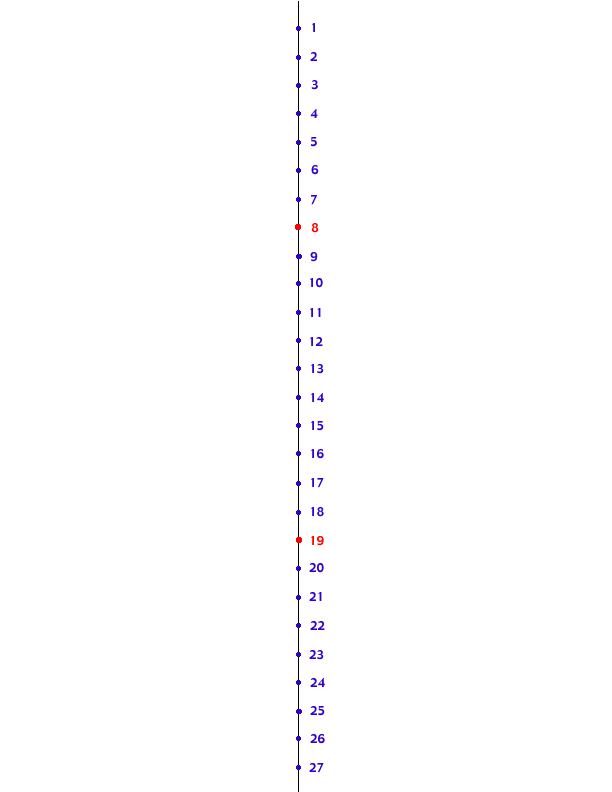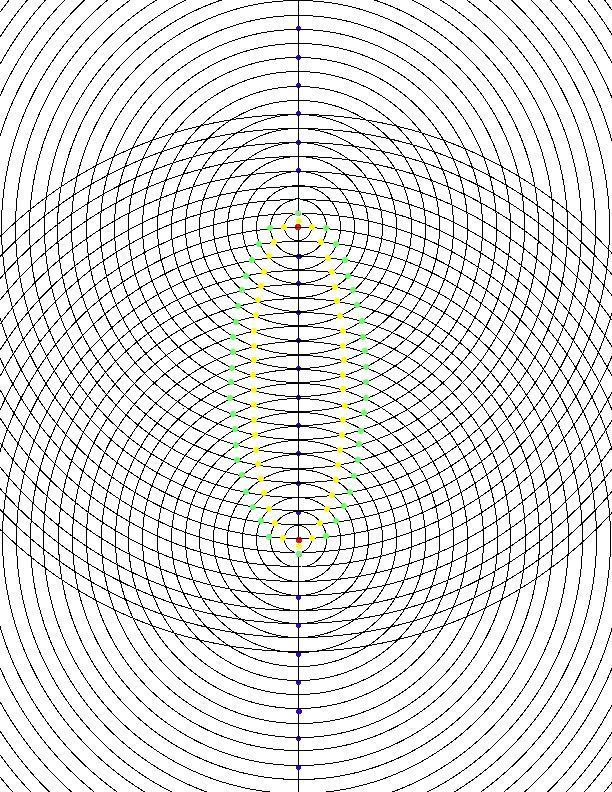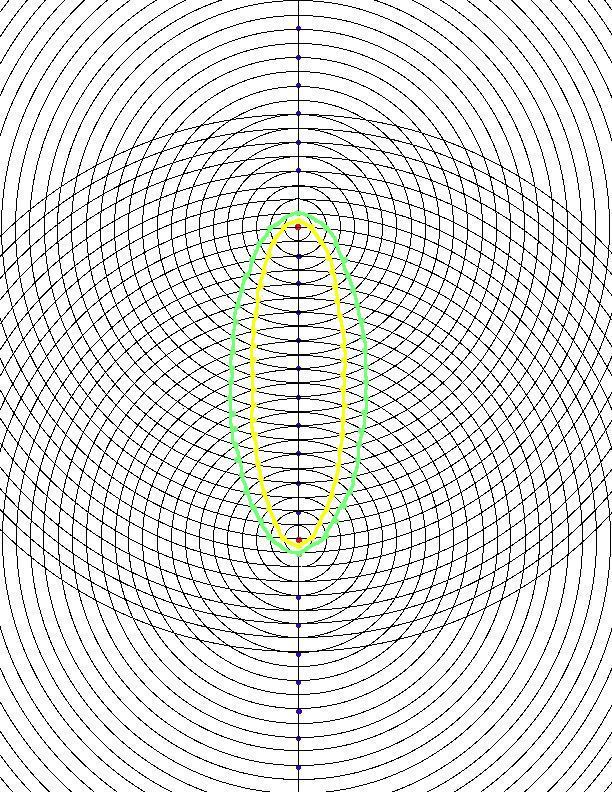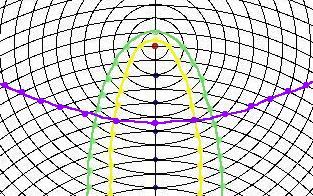Hyperbolas & Ellipses
|
Introduction
In spite of the popularity of graphing calculators, students do not have a good knowledge of the shapes and properties of hyperbolas and ellipses. In this unit students learn some basic properties of these curves, and they draw them, in order to get familiar with their shapes. We use the following characterization of ellipses and hyperbolas, which may also serve as their definitions. The expression d(P, Q) means the distance between the points P and Q. Each hyperbola is a curve on a plane that is determined by two different points, F1 and F2, called foci (the singular is focus) and a real number c, with 0 < c < d(F1, F2). It consists of all points P such that Each ellipse that is not a circle is a curve on a plane that is also determined by two different points, F1 and F2, called foci, and a real number c, with d(F1, F2) < c. It consist of all points P such that If we keep c constant but move F2 toward F1 until they coincide, the ellipses converge to a circle with center F1 and radius c/2. This is one of the reasons why a circle is considered to be a special case of an ellipse. These properties allow you to draw ellipses and hyperbolas with considerable precision, as is shown below. Activity Task 1: Making a grid formed by circles. Draw a straight line down the center of your paper, dividing it into two 4 1/4 by 11 inch rectangles. Draw points one centimeter apart (or other unit of your choice) along the line. (Smaller units give more precision, but they also require more work.) Number them as shown in this figure below. Choose two of the points as your foci; for example in the figure below, we chose points #8 and #19 as our two foci. Paper clip your sheet of paper to the piece of cardboard. 
Using a good compass, draw two families of circles with centers at F1 and F2, and with radii equal to the whole numbers of your unit: 1, 2, 3, ... Here is a figure of what it should look like. These circles form a grid of four-sided cells whose sides are not straight lines, but segments of circles. 
Notice also that four cells meet at each point, including the points you started with, but with two exceptions: only two cells meet at F1 and at F2. Task 2: Drawing hyperbolas and ellipses In each cell, the points on one diagonal, AD or BC, are on the same hyperbola with foci F1 and F2, and the points on the other diagonal are on the same ellipse (with foci F1 and F2). But again, there are two exceptions: points on the line going through F1 and F2, and one line perpendicular to it, are on straight lines and are not part of an ellipse or a hyperbola with foci F1 and F2. Proof. Let AC and BD be on two consecutive circles with center F1, and AB and CD be on two consecutive circles with center F2. If d(F1, D) = r1 and d(F2) = r2, then d(F1, B) = r1, d(F1, C) = d(F1, A) = r1 + 1 , and d(F2, C) = r2, d(F2, B) = d(F2, A) = r2 + 1. Thus, d(F1, B) + d(F2, B) = d(F1, C) + d(F2, C) = r1 + r2 + 1 |d(F1, A) - d(F2, A)| = |d(F1, A) - d(F2, A)| = |r1 - r2| An exception occurs when c = r1 + r2 + 1 = d(F1, F2), and when c = |r1 - r2| = 0. Students should finish their task by carefully drawing several hyperbolas and ellipses, either free hand or with a French curve. Of course they can color them in any way that they like, creating beautiful pieces of art. Here is an example of how to draw ellipses on this grid (click on either picture to see it fullsized): 

Remark To draw a hyperbola on this figure, follow this diagram. Here is what the final product should look like, with two ellipses (green and yellow) and one hyperbola (purple). Most people are rather surprised by such drawings. Ellipses look more rounded than expected, and hyperbolas look like slightly bent straight lines (which they are). Here is a close-up picture showing you how to start the ellipses and hyperbolas. 
Lesson Index |